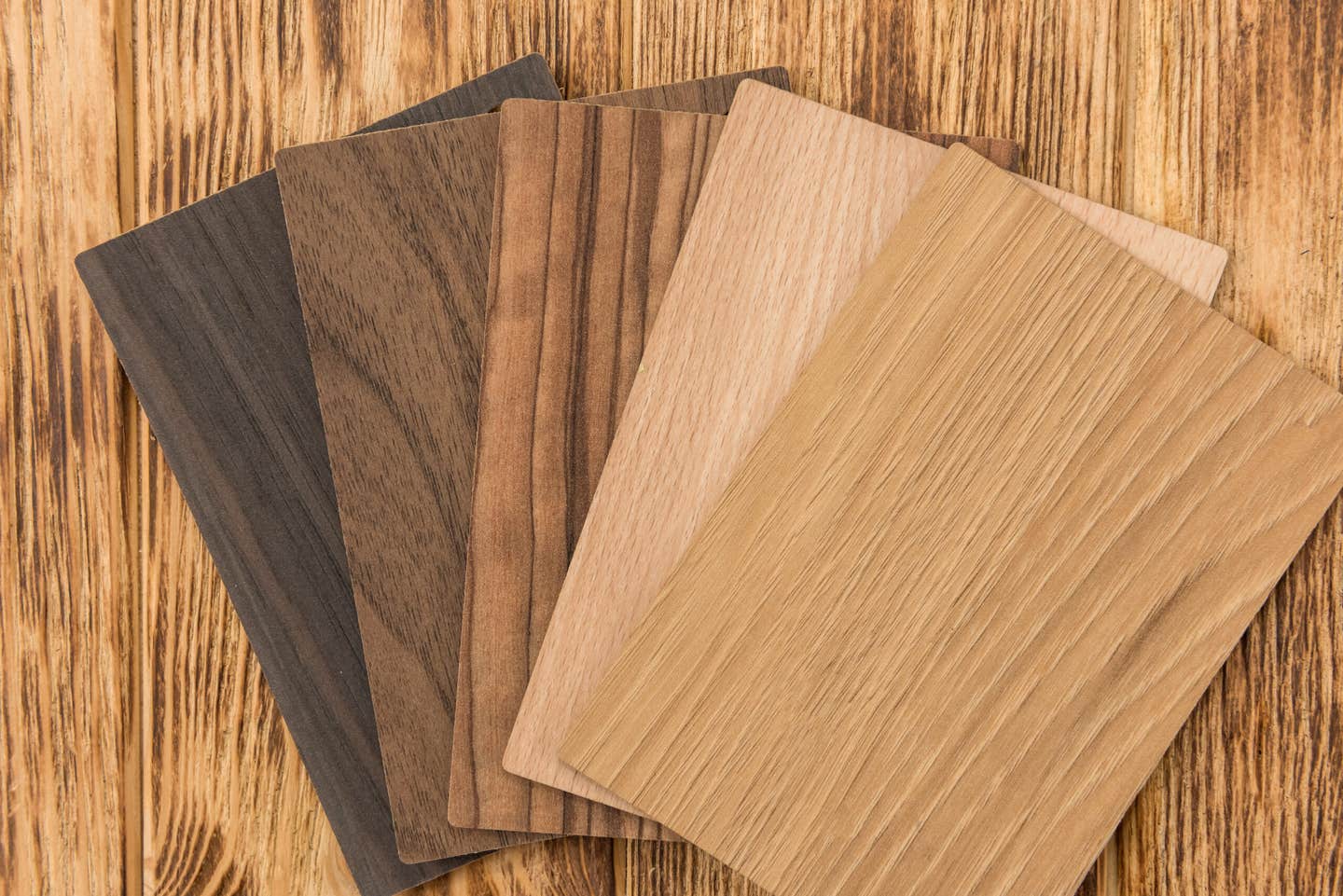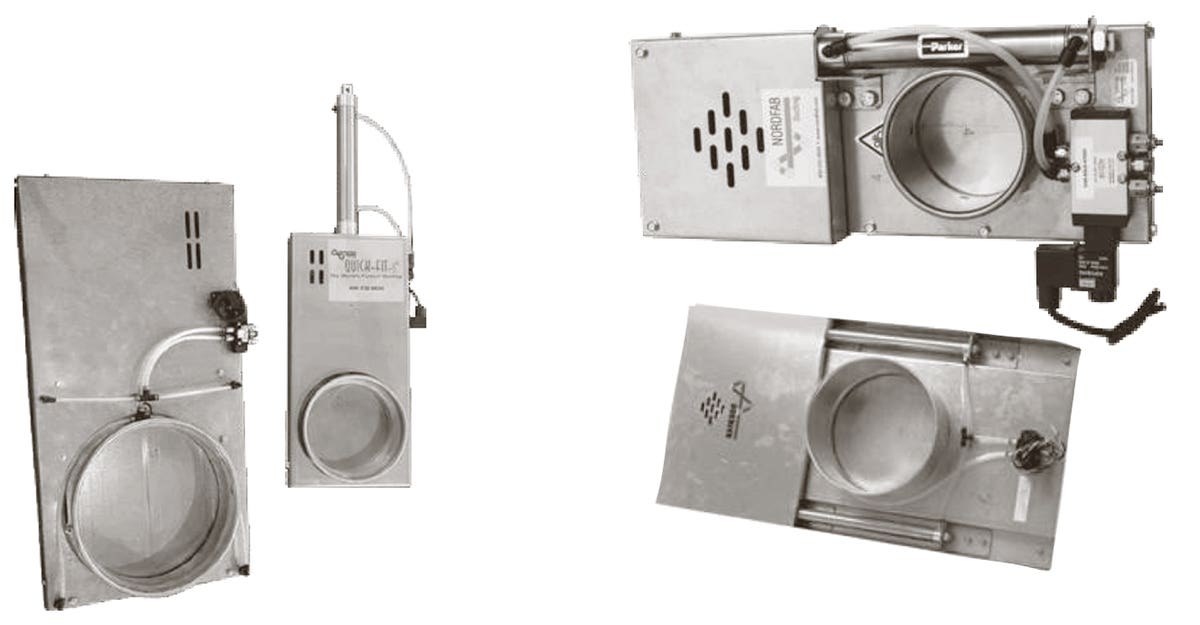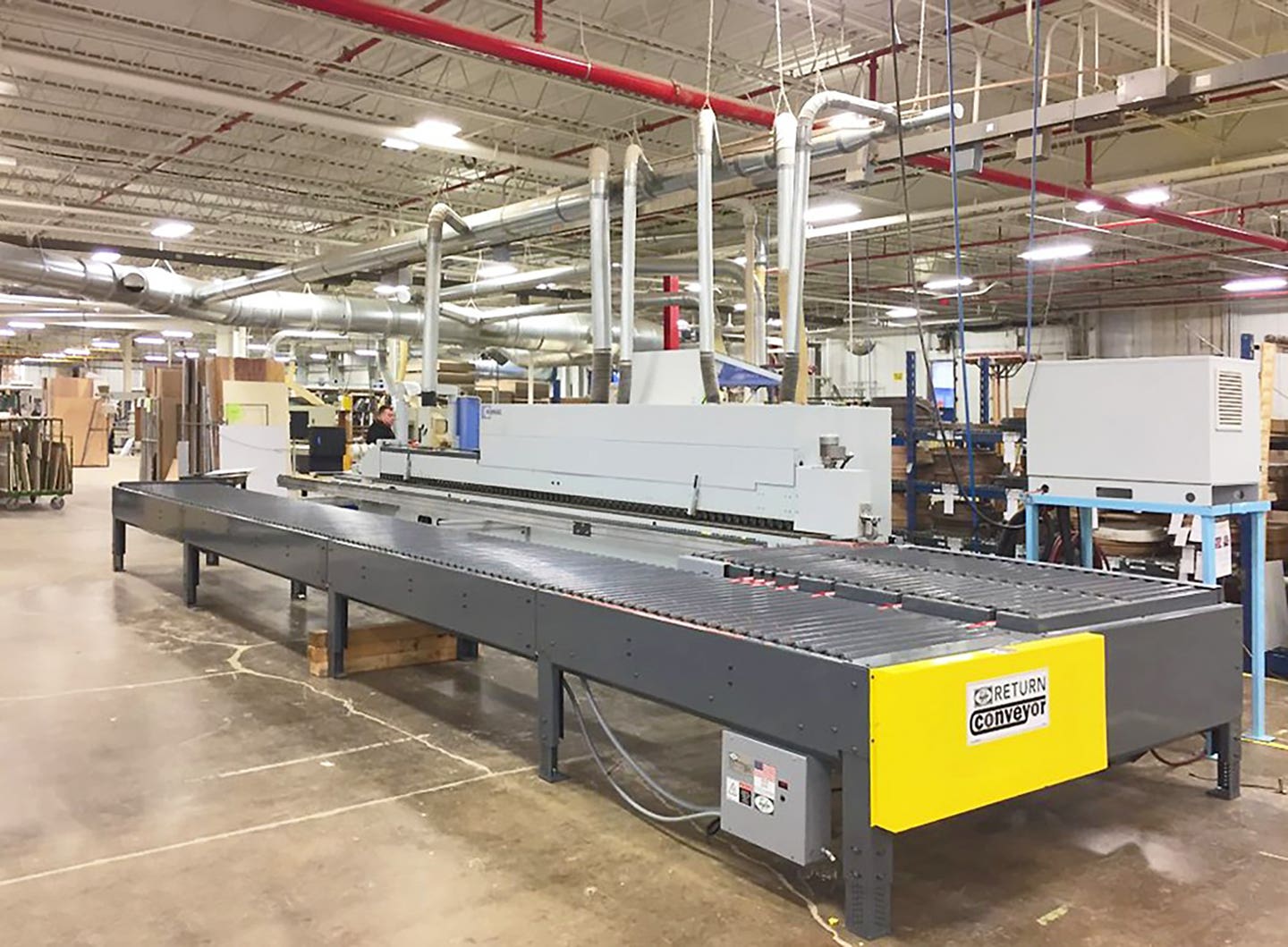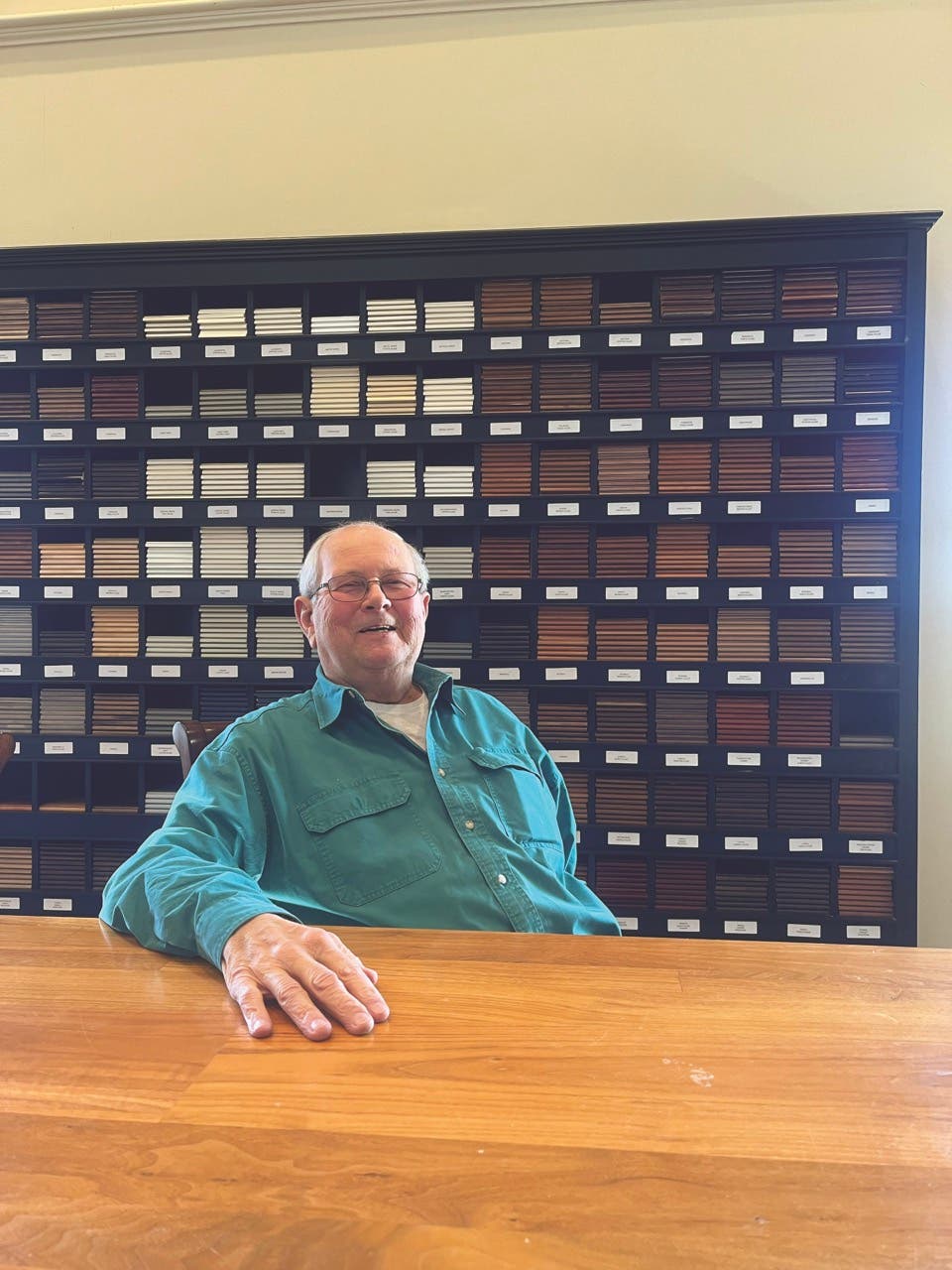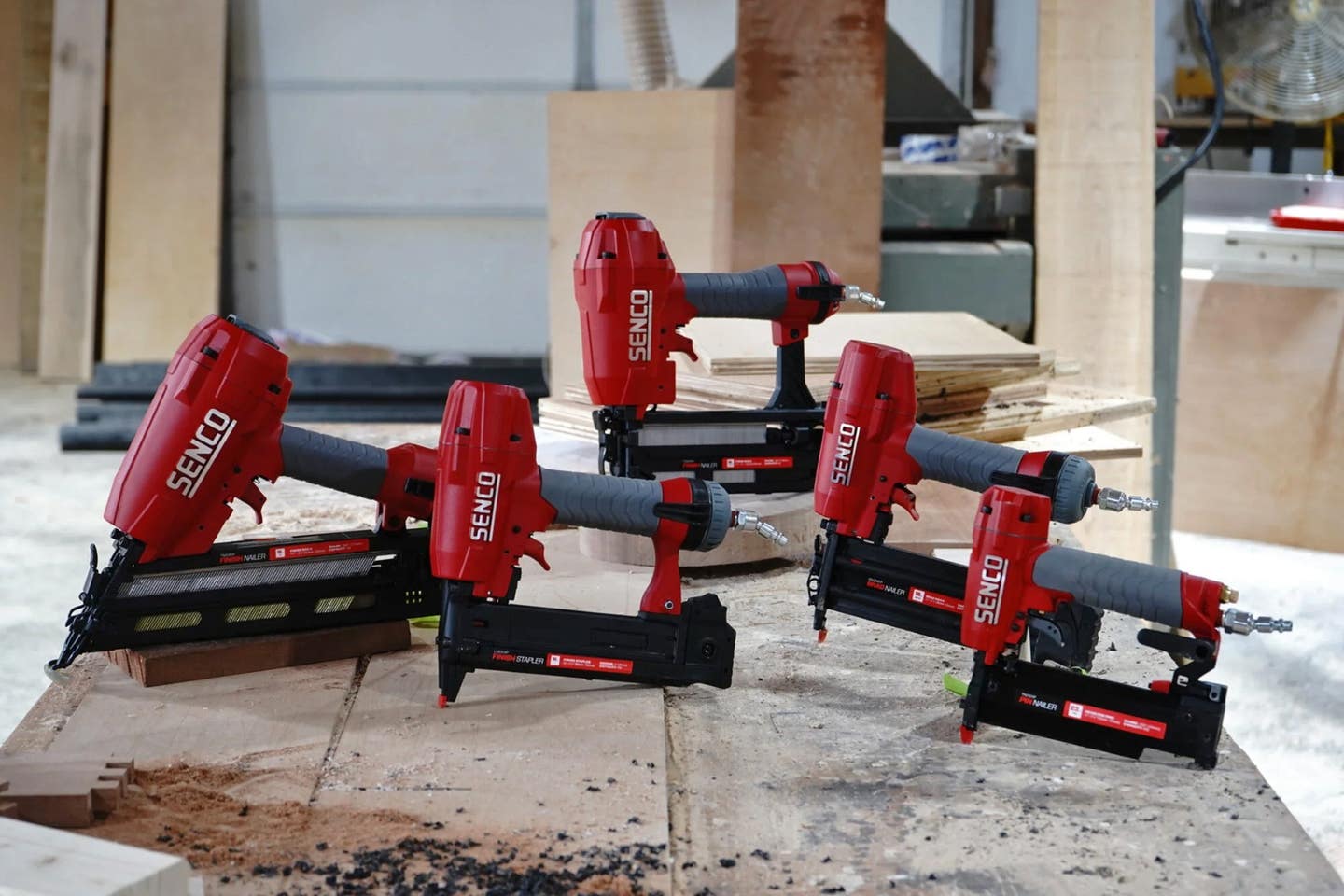Integrate to Automate
CNC software developers are creating some interesting possibilities.
About 15 years ago EPIK (the creators of RaptorCNC) introduced a new term to woodshops. Mechatronics is, in the company’s own words, “a holistic discipline that covers mechanics, electronics, software, and the integration of all three into a system.” EPIK was prescient. Since then, integration has become the most important key to growth in our increasingly automated industry.
As a sign of the times, Fanuc America announced in March that it now offers a feature that allows CNCs to directly program robots through G-code. Even operators with little or no experience with Fanuc’s robotic systems can create a robot program from the CNC, just using G-code. Now, small- to medium-sized woodshops might find it a lot easier to add robotic automation for machine tending, loading/unloading, parts placement or other assistance to the router. Fanuc calls the new option “Quick and Simple Startup of Robotization”, or QSSR.
This underscores a trend in CNC software toward increased artificial intelligence and robotics in routing operations, and further integration of milling in work cells that perform more and more automated operations.
Woodworking software has always recognized that there are three distinct components to operating a CNC. First, computer-aided design (CAD) provides the drawings. Then computer-aided manufacturing (CAM) turns the design into G-code instructions for the machine. And finally, customized control software converts the G-code into motion on each specific machine.
What Fanuc is doing is allowing those established parameters to include new technology without requiring the operator to learn a whole new set of software programs. CNC manufacturers are continuously redefining the work cell by adding more options such as parts management, loading/unloading, more sophistication in automated tool and aggregate changing, creative labeling and always more intuitive controls. CNC software has to keep pace with physical innovations, and that’s either done by patchwork add-ons to existing programs, new versions of familiar software, or entire new packages.
A good example of a comprehensive update is the latest version of Alphacam from Hexagon Manufacturing Intelligence. It includes upgrades for automation, clamps, nesting and solid machining. For example, the Automation Manager now shows a list of parts that could not be nested, so the operator can either cancel these or process them in a future job. And a new option to optimize toolpath overlapping significantly improves the way material is used in nesting. It allows toolpaths around different parts to overlap, provided the tool doesn’t cause any damage. Plus, the new Clamp Insert lets clamps and fixtures be dragged and dropped into drawings and, once they’re in place, it reads the material thickness and places the clamp at the correct Z level.
What Alphacam is doing is automating processes in ways that can reduce operator error in a holistic manner that doesn’t just look at a toolpath, but rather integrates considerations about nesting and clamping for more efficient and accurate project management.
Integrating various aspects of production doesn’t always need to be about sequencing routing, edge banding and loading. It can also be about individual maintenance issues that keep the process rolling along, even when the operator isn’t monitoring every little detail. For example, NUM has recently launched some innovative artificial intelligence software (called NUMai) that provides CNC machine tool users with highly cost-effective condition monitoring capabilities. It monitors processes for a few hours while it ‘learns’ what’s going on, and the data it collects is used to inform a neural network so that any deviation from ‘good’ machine behavior and performance can be detected and predicted.
Which software package?
A woodshop looking to add CNC capabilities or expand existing assets has to navigate the software options to stay ahead of the game. The best place to start looking for CNC software is on the website of the company that supplied the CNC router. That’s because the hardware supplier will have people on staff that are intimately familiar with the nuances of the software that they are recommending, and how that specific program can relate to and take full advantage of the abilities of the hardware. Most machine suppliers run or support forums or user groups that are constantly receiving feedback and suggestions from customers in the field. Members of those groups can often answer a shop’s questions when a new version or tool becomes available.
Another route to follow when choosing a CAD/CAM package is to hire somebody who is already very familiar with one of the main solutions. The only problem here is that this technology is constantly in motion, so if the package that the designer has used in the past isn’t keeping up with advances in machinery, the shop may lose out. Or the designer may ignore industry opportunities because they are simply not familiar, or immediately available.
Some shops outsource their design and programming tasks. This is certainly a viable option for smaller shops where the staff is fully involved in production and has little time to spend learning or keeping up with software. The key is to work repeatedly with the same CAD designer so that he/she understands what the shop is capable of producing. That allows the designer to tweak projects so they more fully use the machinery and the skills that are available on the shop floor.
While time is certainly a huge factor in this decision, money is probably not as pivotal as it once was. Publishers have almost unanimously switched to rental rather than ownership agreements with woodshops, and that has significantly reduced the cost of access to state-of-the-art packages. For example, Mozaik Software offers layout and design software for custom cabinets and closets at $50 a month, and design to manufacture software for traditional “non-CNC” cabinet shops at $75. So, a shop with a flat table CNC can now rent the company’s complete design to manufacture software for just $125 a month. The advantage here is that the woodshop gets the latest version of every aspect of CNC software, complete with automatic updates, for about the price of a table saw blade.
Autodesk’s Fusion 360 has followed a similar path. The program combines design, engineering, electronics and manufacturing in a single software platform that is currently offered at $495 a year. This is a general manufacturing program, rather than being specific to cabinetmaking. It’s a cloud-based 3D modeling, CAD, CAM, CAE (computer-aided engineering), and PCB (printed circuit board, which is used to electrically connect components) software platform for a wide variety of product design and manufacturing tasks.
Large woodshops need software that is focused on CNC production, such as EnRoute from SAi. This handles everyday cutting, nested-based production and creative design applications. Its CAD/CAM component provides a combination of 2D and 3D design and toolpath capabilities for CNC routers. EnRoute has recently added a new Backplot tool for previewing output before it’s sent to the CNC machine. It can display four views at a time, provide detailed cut statistics, and is fully configurable so that it can be made to successfully interpret and plot virtually any CNC output file format. And a new job statistics tool closely emulates the movement of the woodshop’s CNC by taking into account the acceleration and deceleration of the machine as it moves in and out of corners. The result is improved estimates of cutting time that can be used in both planning and pricing.
Eurosoft offers a wide palette of programming including products that cater to areas such as optimization and nesting, design, labeling, data/ file conversion and inventory management. The company’s BlueCell optimization, nesting and automation program can explore hundreds of thousands of solutions in just a matter of seconds. And the optimized results can be transferred directly to panel saws and routers using post-processors that generate cutting instructions for the machines in their own native language. (Post-processing, Eurosoft notes, will eliminate the need for time consuming and error prone manual programming.)
SigmaSUITE 20 from Sigmanest is the latest release of a software package that seeks to integrate more than just CNC production. In addition to improved CAD/CAM nesting, cutting, and fabrication power, the second release of Version 20 “elevates the company’s Business Systems software with an improved user interface (UI), and more management features”.
Cabinet Pro offers software for both small cabinet shops and large manufacturers. The program produces detailed shop and finished drawings, floor plans, elevations, 3D perspectives, unlimited user-defined cut-lists, material reports, door reports, bidding, financial charts and reports, and panel optimization. It supports all G-code variations including Woodwop for the Weeke and Homag plus Biesseworks, Hops (for Holzher), Xylog, Wincut, and HPGL.
MasterCam from CNC Software provides solutions including 2- through 5-axis routing, milling, and turning plus 2D and 3D design and drafting. It addresses the needs of operators from the home hobbyist to professional manufacturers, and it delivers programming for safe and efficient router machining of everything from wood to composite materials. From CAD inception to part completion, Mastercam Router supports features that are unique to CNC routers including toolpath and geometry nesting, block drill support, aggregate head support and saw cutting support. And its advanced nesting option gives a woodshop a variety of additional tools including TrueShape that can program nesting in scrap material. MasterCam’s CNC Engraving lets a shop create signs, artistic carvings, molds, and more.
Not everyone builds cabinets
For shops that build unique furniture and are looking more at design than manufacturing solutions, a CAD package such as Sketchlist may be an option. This is a serious hobby or small pro shop 3D design program that has a relatively short learning curve. Building virtual projects (on a screen, as opposed to building physically in the woodshop) is a matter of inserting virtual boards, cutting them to size and then locating them in the design. The model is created instantly on the screen. Simply enter dimensions and materials for the models, and the software automatically generates the layouts, spreadsheet, drawings, cut lists, and other reports. Sketchlist was specifically created for woodworking.
The latest version of Vectric (V.10) offers enhanced 2D drawing with intuitive drag and drop options. Node Editing can now be performed on multiple vectors at the same time, for quicker editing, and the welding tool now intelligently welds overlapping text, keeping all the internal regions of the text. When text is placed on a curve, its anchor can now be freely moved rather than being limited to three locations. Designers using VCarve and Aspire can now rotate bitmap images using handles on the corners, and they can convert photographs or images into toolpaths producing stylized engraved designs. Those programs plus Cut2D Pro also now offer improved nesting where one can see all the outer boundaries and outlines for parts, and nest on both sides. And in Aspire, one can now overlay reference artwork and use preset values to sculpt.
Florida-based BobCAD-CAM offers a wide range of industrial CNC software, including the Router program for woodworking. It can design 2D and 3D models, create toolpaths, and allow a shop to assign multiple cutting strategies to a single feature. It has advanced simulation features to visually inspect and confirm work before sending it to the machine. A new feature here is Corner Slowdown, which slows the cutting motion as the tool approaches inside or outside corners or sharp changes in direction. The idea is to both eliminate blow-out and avoid stressing tools.
For shops building unique projects, SolidWorks 3D CAD is the core program in that company’s suite of product development solutions. Among other tasks it covers design, simulation, cost estimation, manufacturability checks, CAM, sustainable design and data management.
Learning and growing
Once a shop chooses a software package, it’s important to visit the website of the CAD/CAM publisher on a regular basis. There will always be new versions or glitch fixes to make life easier, but there will often be suggestions from the publisher than can change what a shop is able to offer its customers. For example, in March, Jamie Garth at CabMaster Software uploaded a video (youtu.be/HkAPCJQ2pFQ) that explained how a shop using the company’s Build 60 can now create and then rotate a grid inside a cabinet. That means woodshops using CabMaster can now draw different kinds of wine racks, towel holders or other angled storage inserts. And Garth shows how to tweak the design to center the grid in the cabinet, so all the corners are even. He also demonstrates how to remove either the vertical or horizontal elements to open up new possibilities for slanted storage, and he shows details of the angles at which grooves should be plowed. Because of his post, a woodshop might now use the CNC software to create rendered drawings for clients who want to display round objects in a retail store – anything from olive oil bottles to Slinkys.
Video tutorials have become a handy way to explain software to professionals in the industries that use it. KCD Software instructor Ken Frye has uploaded a library of instructional shorts that cover topics such as “Setting and Changing your Shop Standards” to “Advanced Design Topics”. The advantage here over even live support is that a video can be stopped and replayed several times until its message is understood. Other topics in the Frye series cover the rudimentary steps involved in getting started, how to join cabinets together, creating a cut list, and even setting up pricing for bids and invoices.
Woodshops may wish to use a coordinated set of tools from a single publisher, rather than adding random components as needed. Sometimes, the software is very specific to a certain machine. For example, BOSS Router supplies a software package called RouterCAD/CAM that includes G-code, a tool library, toolpaths, part and cabinet designs and a CAD design drawing program for cases, doors and drawers.
Coreo is an intuitive CAD/CAM software suite that supports workflow on a MultiCam CNC, from initial creation of the art to full production of the part. Developed by building on 25 years of experience delivering motion control solutions to over 20,000 machine tools and motion applications nationwide, MultiCam seamlessly integrates Coreo with each machine tool’s control system hardware.
Carbide 3D offers a couple of software packages for its Nomad and Shapeoko brands of desktop CNCs. The Carbide Create Pro package adds 3D modeling and machining to the company’s free Carbide Create software.
Hexagon’s Production Software division is a prime example of the full spectrum approach to CNC software. Hexagon acquired Vero Software, a specialist in CAD CAM software, back in 2014. Then in 2017 it acquired FASys, which added tooling and resource management software plus shop-floor automation and integration expertise. And the 2018 addition of SPRING Technologies provided woodshops with CNC simulation technology for G-code verification and workflow optimization. These three separate companies, each a specialist in a given area, have since been infused with a single identity and protocol, so they work seamlessly together.
Hexagon also offers Cabinet Vision, which is a single, fully modular software package that goes from design to manufacture. However, shops can buy only the features they need, so the package grows as a shop’s needs grow.
Microvellum’s design and drafting software is based on AutoCAD and includes advanced tools for 3D modeling and prototyping. It also delivers visually stunning, photo-realistic, life-like images of entire rooms or individual products for presentations or prototyping. It lets a shop’s designer view, share, and review drawings with architects, drafters and designers using the same file format and software. That ability to share also works well with manufacturer’s libraries. For example, the AvanTech YOU drawer system from Hettich is available in the Microvellum toolbox.
This article was originally published in the May 2021 issue.


